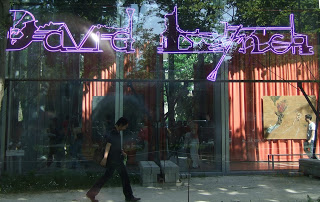Going back to Rockville
Two weeks ago I found myself in the far North – Edinburgh. The last time I had walked the streets of Edinburgh it was the winter of 1998, the threshold of 1999. Just before I left for the south, for Marseille, so there is a certain symmetry to write about this trip now, just after my last entry about Marseille.
Well, up north, the shadows are even longer than in Paris, that’s for sure. In early summer the sun in Edinburgh doesn’t exactly set it more sort of fades away. Even at 10pm in the evening there is a weak watery blue light that fills the streets. One leaves one’s restaurant and is surprised by a lingering glow still present in the sky.
I had returned to the city for the usual no-good reason. Of course I took a lot of photographs as I wandered the streets with my colleagues or alone. On the last day before my departure I made an epic tour of the city, walking from my guest house in Morningside (excellent Scottish breakfasts each morning) all the way to the modern art galleries in Dean village and then back across the city to the new Scottish parliament and the foothills of Arthur’s seat, the extinct volcano in the centre of Edinburgh. But after traversing the city I had no energy left to make the ascent so I contented myself with watching people trudging forcefully across its slopes. I remembered the last and only time I had made the climb myself, with my friend Brendan. The soles of my shoes were worn thin and it was impossible to get any purchase on the smooth mossy slopes which had been worn flat by generations of hikers. I slid around like I was on an ice-skating rink. It was only with great difficulty that I managed to reach the summit.
I know Edinburgh quite well, despite the fact that I’ve never lived there. In the dark days towards the end of my time in England I made constant trips there to escape the tedium of life in Durham and to visit friends of mine who lived there. I was attracted by the cafes and galleries which were non-existent where I lived.
Now of course I see all this a bit differently. The city centre of Edinburgh, at least in the old town, appeared to me now as hollowed-out, empty. A facade, almost. I was constantly surprised at how quiet the streets were only a few short steps away from the main thoroughfares, after the frantic density of Paris. I didn’t remember this. I didn’t remember either that at 9AM on a Saturday morning that most shops were not yet open, that life had not yet started. In the evening, walking around, it was hard to see anyone who was neither a student or retired, at least in the places around the old town. A cold wind pursued me relentlessly throughout my week-long stay there. (A friend of mine told me that a colleague of his had remarked that more wind passed over Edinburgh in one year than in any other part of the UK.)Nevertheless, the rain only really began in earnest on the last day of my trip, and the sinister bulk of the castle looming over Princes street was partially neutralised by the presence of a blue sky containing only a few scattered clouds….
All the cafes and bars I remember from those distant winters in Edinburgh were still in the city; no changes, it seemed. On Saturday morning I found myself once again in Florentin’s, where I had spent many long hours at the end of the last century. But I found it strangely different than before, than the last time I was there which I remember very clearly as being January the 1st, 1999. What had changed? The wall between two halves of the cafe had been removed, making one large open space. It no longer felt so cramped as before, but perhaps just slightly less intimate. I think I wrote a lot of letters there, in the days when I still wrote letters. It is strange how these places continue to exist, even in our absence.
Technorati Tags: Edinburgh, voyages
